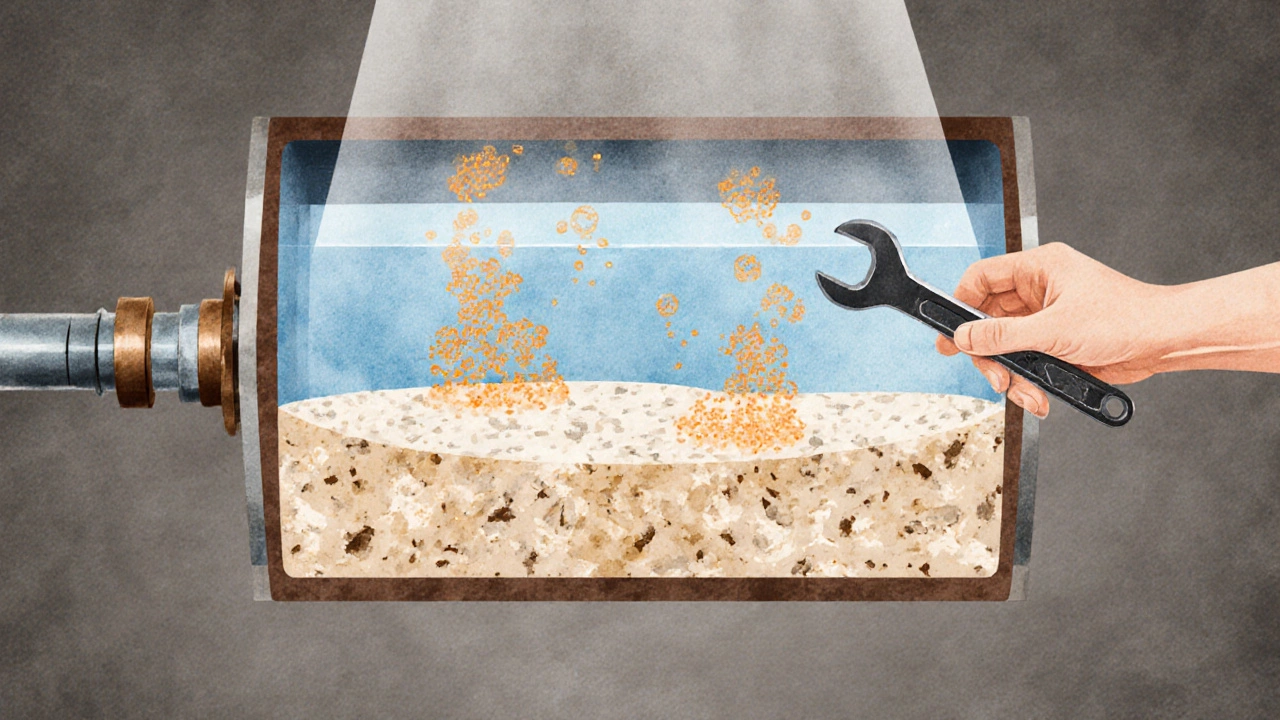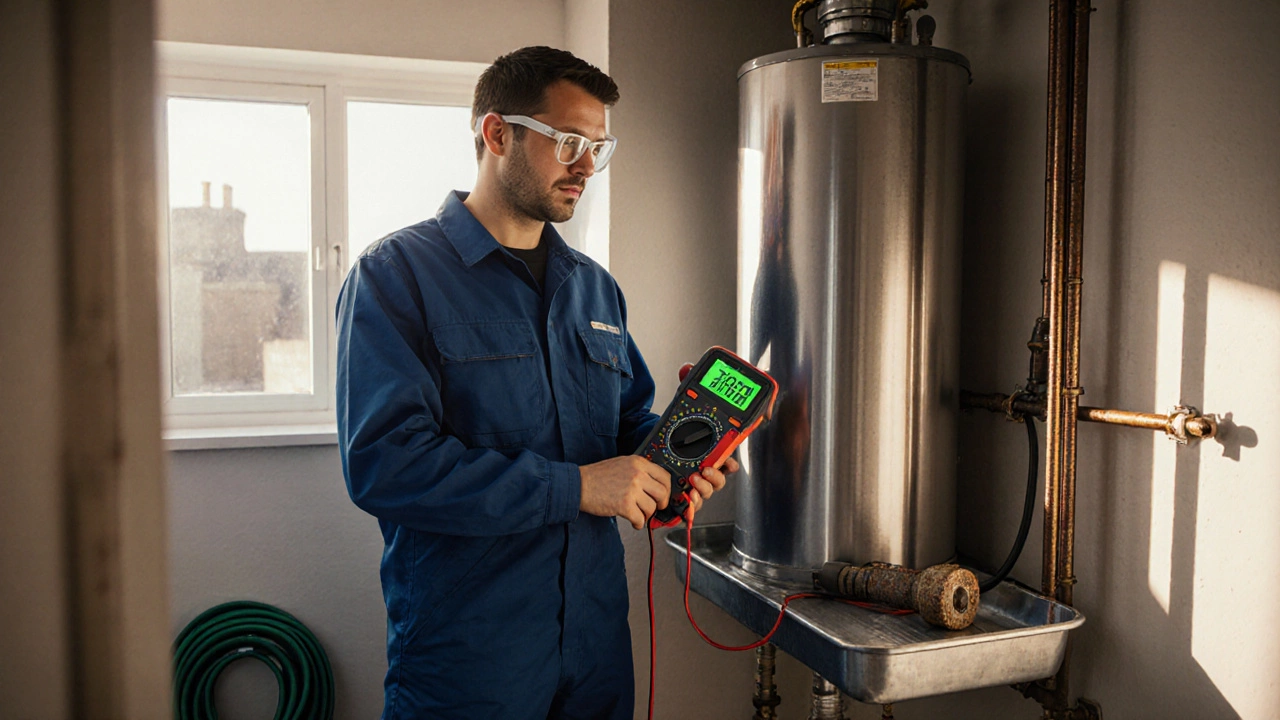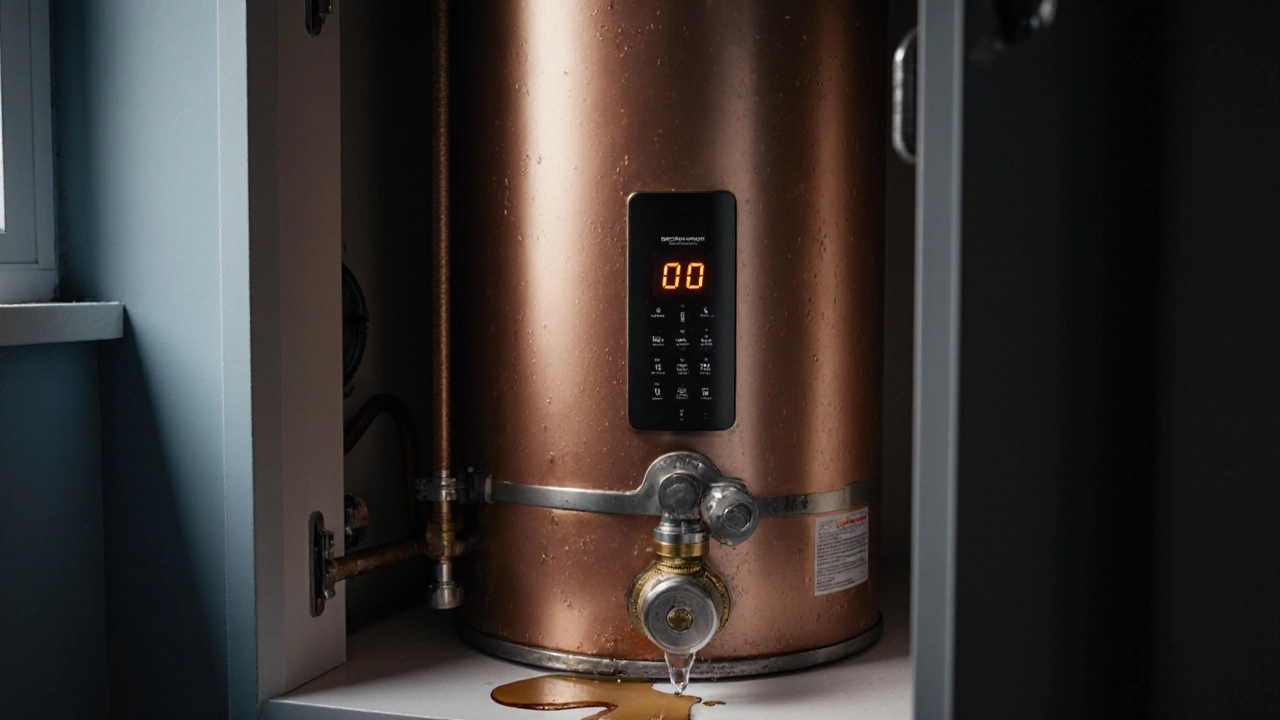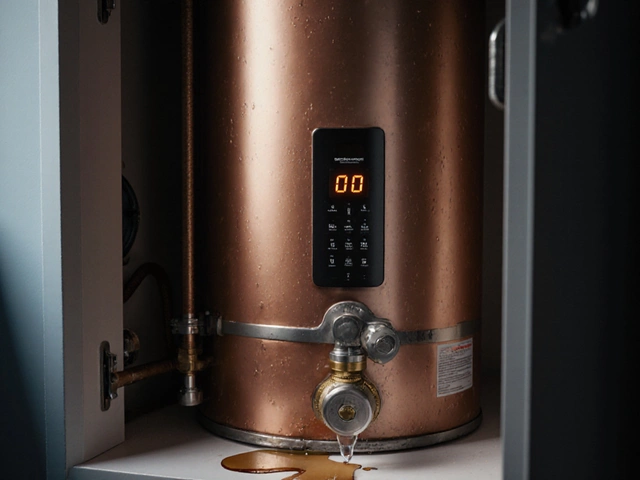Water Heater Health Check
Check for Water Heater Issues
Select any signs you're experiencing with your hot water heater. This tool will help you understand the urgency and recommended actions.
When a hot water heater is a household appliance that heats and stores water for showers, dishes, and heating systems starts to misbehave, you usually notice it before a total breakdown. Spotting the early warning signs can save you a chilly morning, costly emergency calls, and possible water damage. Below are the most reliable clues that your unit is on its way out, plus what you can do about each one.
Key Takeaways
- Unusual noises, leaks, and inconsistent water temperature are the top three red flags.
- Checking the pressure relief valve and looking for corrosion can prevent unsafe failures.
- Regular flushing removes sediment that shortens heater life.
- If any sign appears alongside a pilot‑light flicker or error code, call a professional ASAP.
- Keeping a simple maintenance checklist extends service life by up to 30%.
1. Strange Noises - The First Audible Alarm
Listen carefully the next time you turn on hot water. A rumbling, popping, or knocking sound usually means sediment build‑up has accumulated at the bottom of the tank and is being heated. When water boils under the crust, it creates steam pockets that burst, producing the noise. Over time, this erosion can weaken the tank and cause leaks.
What to do:
- Turn off the power or gas supply.
- Drain the tank and flush with fresh water for at least 10 minutes.
- Inspect the interior for heavy mineral deposits; if they’re thick, consider a replacement.
2. Leaking Water - Visible Proof Something’s Wrong
Even a tiny drip around the base of the heater is a red flag. Leaks can arise from a cracked tank, a loose pressure relief valve which releases excess pressure to prevent explosions, or corroded pipe connections. In the UK, a leaking electric heater can also indicate a faulty heating element.
Quick check:
- Inspect the valve; if water drips after you press it, the valve may be stuck open.
- Look for rust or condensation around seams - these suggest internal corrosion.
- Mark the leak spot with tape; if it spreads, shut off the mains and call a qualified repair technician who holds a Gas Safe or Electrical certification.
3. Inconsistent or Tepid Water Temperature
When water feels lukewarm one minute and scalding the next, the thermostat or heating element in an electric heater that converts electricity into heat is likely failing. A malfunctioning thermostat may not signal the element to stay on long enough, while a worn element can’t generate enough heat.
Steps to verify:
- Measure the output temperature with a kitchen thermometer; ideal hot water is 120‑130°F (49‑54°C) in the UK.
- If readings swing widely, the thermostat is suspect - it often has a reset button you can press.
- Persistent swings mean the element needs testing with a multimeter or replacement.

4. Pilot Light Issues (For Gas Heaters)
For gas‑fired units, a flickering or constantly out pilot light is a classic sign of trouble. It can be caused by a dirty pilot orifice, a faulty ignition system which sparks to light the burner, or low gas pressure.
Safety tip: If you smell gas (a rotten‑egg scent), turn off the gas valve immediately, ventilate the area, and contact a certified professional. Do not attempt to relight the pilot yourself.
5. Age of the Unit - When Time Becomes a Sign
Even if everything else looks fine, age matters. Most conventional tanks last 8‑12 years in the UK climate. After that, internal corrosion, weakened welds, and efficiency loss become likely. Check the manufacture date on the data plate - a four‑digit year is usually stamped near the bottom of the tank.
If your heater is nearing the end of its life span, schedule a proactive replacement rather than waiting for a catastrophic failure.
6. Warning Lights or Error Codes (Modern Smart Heaters)
Newer smart water heaters feature digital displays that throw error codes like "E03" or flash amber lights. These codes usually point to sensor failures, flow‑rate issues, or communication faults with the home automation hub.
Consult the user manual’s troubleshooting table. If the code persists after a reset, a qualified technician should diagnose the electronic control board.
7. Increased Energy Bills - The Hidden Cost
If you notice a gradual rise in your electricity or gas bill without any change in usage, the heater may be working harder than needed. Reasons include scaling on the heating element, a cracked heat trap, or a failing thermostat that runs the unit continuously.
Run a quick test: Turn off the heater for an hour and note the drop in energy draw on your smart meter. A significant reduction suggests the heater is the culprit.

8. Presence of Rust or Corrosion
Exterior rust, especially around the inlet and outlet connections, indicates water exposure to oxygen - a sign the tank’s internal lining may be compromised. Corrosion accelerates leaks and can contaminate water with metallic taste.
Inspect the anode rod (a sacrificial magnesium or aluminum rod) if your unit has one. If the rod is heavily corroded, replace it - this simple step can add years to the heater’s life.
Quick Diagnostic Checklist
| Sign | Potential Cause | Urgency |
|---|---|---|
| Rumbling or popping noises | Sediment build‑up | Medium - flush soon |
| Water pooling at base | Leaking tank or valve | High - shut off and call tech |
| Inconsistent temperature | Thermostat or heating element | Medium - test/replace parts |
| Pilot light won’t stay lit | Dirty orifice, gas pressure | High - gas safety check |
| Error code on display | Sensor or control board | Medium - reset, then service |
| Higher energy bill | Scaling, constant run‑on | Low‑Medium - inspect and clean |
| Visible rust or corroded anode | Internal tank degradation | High - consider replacement |
| Unit age > 10 years | Normal wear‑out | Medium - plan replacement |
Maintenance Tips to Extend Heater Life
Even the best‑built heater will suffer if neglected. Follow these simple habits every six months:
- Turn off power/gas and drain the tank completely.
- Use a garden hose to flush out loose sediment.
- Inspect and replace the anode rod if it’s less than ½inch thick.
- Check the pressure relief valve by lifting its lever - water should flow freely.
- Wipe exterior surfaces to prevent rust.
- Record the date of each service; a log helps spot trends.
When to Call a Professional
Some issues are best left to the experts, especially when dealing with gas, electricity, or potential safety hazards. Call a certified technician if you encounter any of the following:
- Persistent leaks after tightening connections.
- Gas smell, pilot light problems, or failed ignition.
- Repeated error codes despite resets.
- Corrosion visible inside the tank (requires opening the unit).
- Age greater than 12 years with multiple warning signs.
A qualified professional can also perform a full efficiency test - ensuring your heater meets current UK PartL regulations for energy performance.
Frequently Asked Questions
Why does my hot water heater make popping noises?
The pops are usually steam bubbles formed under a layer of mineral sediment. When the bubbles burst, they create a popping sound. Flushing the tank removes the sediment and stops the noise.
What is the purpose of the pressure relief valve?
The pressure relief valve releases excess pressure inside the tank to prevent it from bursting. If it leaks or sticks open, water will drip from the valve and can cause flooding.
How often should I replace the anode rod?
Most manufacturers recommend checking the anode rod every 2‑3 years and replacing it when it’s less than ½inch thick or heavily corroded. In hard‑water areas you may need to replace it annually.
Can I repair a leaking hot water heater myself?
Minor leaks from loose fittings can be tightened, but a crack in the tank or a leaking pressure valve must be handled by a Gas Safe or qualified electrician. Attempting a DIY fix on a compromised tank is unsafe and often illegal under UK regulations.
What should I do if I smell gas near my water heater?
Turn off the gas supply at the meter, open windows to ventilate, and call the gas emergency line (UK: 0800111999) immediately. Do not operate any switches or appliances.



